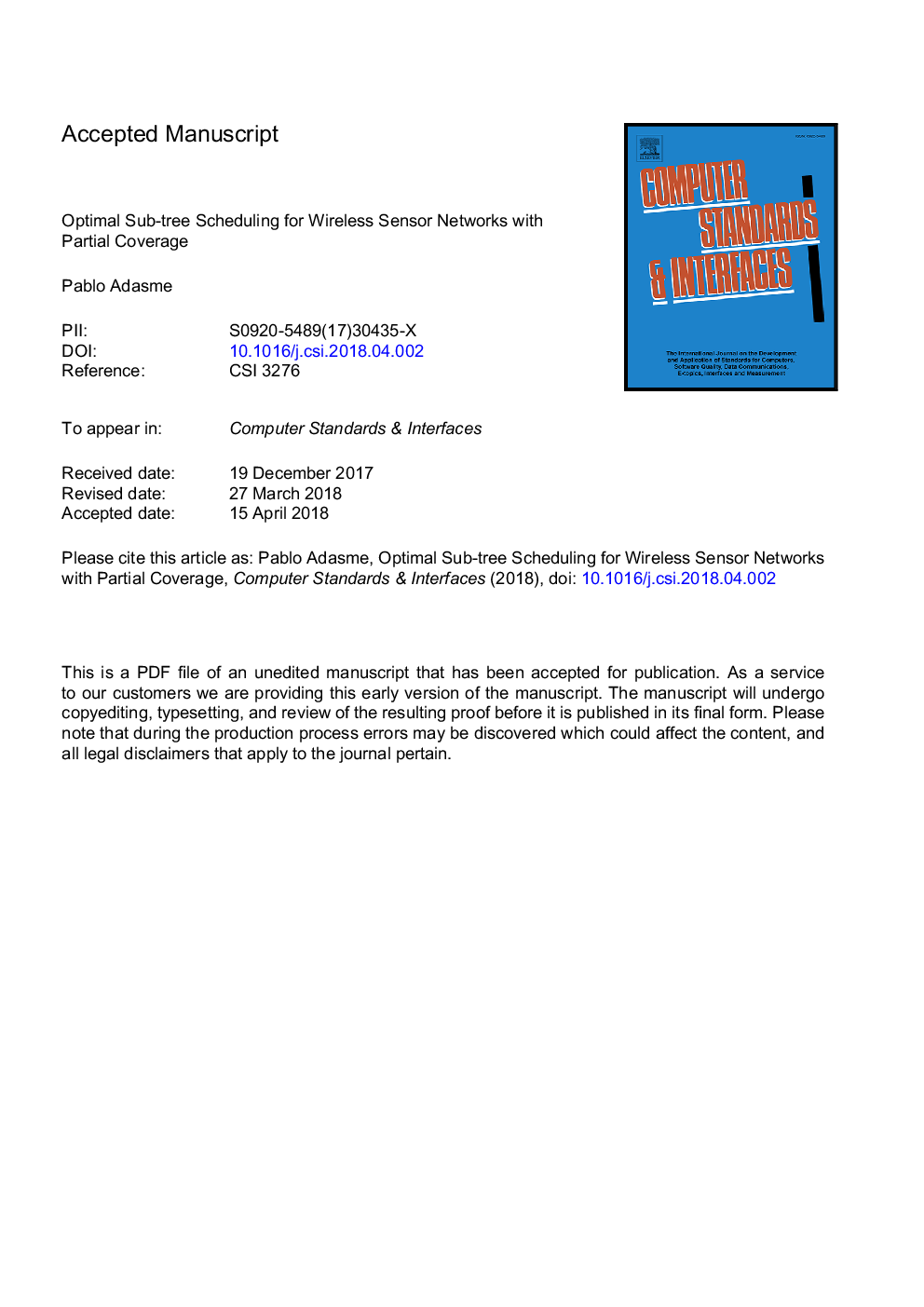| Article ID | Journal | Published Year | Pages | File Type |
|---|---|---|---|---|
| 9951446 | Computer Standards & Interfaces | 2019 | 29 Pages |
Abstract
In this paper, we consider the problem of scheduling optimal sub-trees at different time intervals for wireless sensor network (WSN) communications with partial coverage. More precisely, we minimize the total power consumption of the network while taking into account time dimension and multichannel diversity where different disjoint subsets of nodes are required to be active and connected under a tree topology configuration. Optimization problems of these types may arise when designing new wireless communication protocols in order to increase network lifetime. We propose mixed integer quadratic and linear programming (resp. MIQP and MILP) models to compute optimal solutions for the problem. Subsequently, we propose Kruskal-based variable neighborhood search (VNS) and simulated annealing (SA) meta-heuristic procedures. In particular, we introduce a new embedded guided local search strategy in our VNS algorithm to further strengthen the solutions obtained. Our numerical results indicate that some of the proposed models allow to obtain optimal solutions with CPLEX in significantly less CPU time. Similarly, VNS and SA algorithms proved to be highly efficient when compared to the optimal solutions and allow to obtain near optimal solutions for large instances. In particular, VNS and guided VNS strategies allow to obtain solutions in less CPU time whilst SA methods can reach better solutions at higher CPU times. Finally, optimizing over time dimension allows one to obtain important reductions in power savings which has never been reported before in the literature.
Keywords
Related Topics
Physical Sciences and Engineering
Computer Science
Computer Networks and Communications
Authors
Pablo Adasme,
